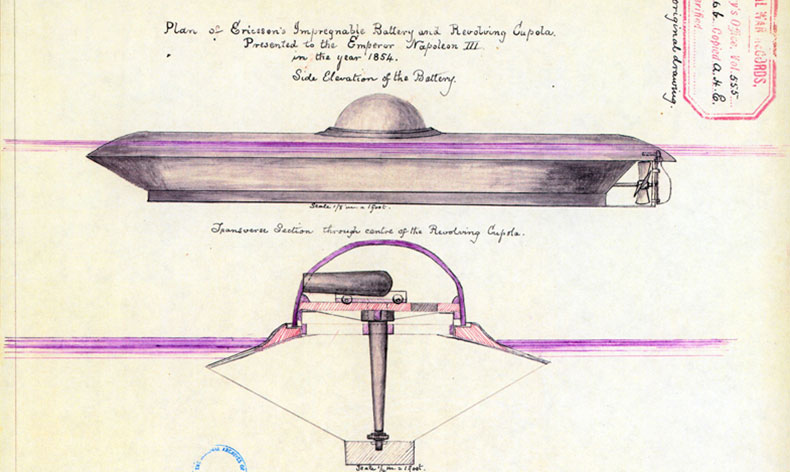
Summary and Findings
In an effort to preserve one of the most famous shipwrecks in U.S. history, the wreck of the USS Monitor was designated our first national marine sanctuary on Jan. 30, 1975. The sanctuary comprises a column of water one nautical mile in diameter extending from the ocean’s surface to the seabed around the wreck of the Civil War ironclad, which lies 16 miles south-southeast of Cape Hatteras, N.C.Average water depth in the sanctuary is 230 feet, depending on the tidal cycles and the Gulf Stream. Since its sinking in 1862, the Monitor has become a productive artificial reef. Numerous fish species, including black seabass, oyster toadfish and great barracuda, call the Monitorhome.
Today, scientists from the National Oceanic and Atmospheric Administration (NOAA) are studying the wreck site of the Monitor, revealing more details every year about the ship’s construction, design and performance, and the circumstances surrounding her loss on a stormy evening in December 1862 in an area of the Atlantic Ocean known as the Graveyard of the Atlantic. While most of the research conducted in the Monitor sanctuary to date has focused on the archaeological documentation of the shipwreck, NOAA scientists are devoting increased attention to the water quality and marine environment of the wreck site. A NOAA data buoy installed in the sanctuary in 2006 provides scientists and the public the opportunity to monitor weather and sea conditions 24 hours a day.
The sanctuary’s remote distance from shore poses special challenges for enforcement, but it is also an important factor in the Monitor’s continued preservation. The site depends heavily on education, word-of-mouth within the dive community, and voluntary compliance with regulations. When those measures are ineffective, partnerships with other government agencies such as the U.S. Coast Guard are vital to enforcing sanctuary regulations. Monitorsanctuary regulations prohibit anchoring, stopping and drifting within the sanctuary; conducting salvage or recovery operations; using diving, dredging or wrecking devices; conducting underwater detonation; drilling in the seabed; laying cable; and trawling. Access is generally limited to scientific research conducted under a permit issued by NOAA; however, special-use permits may be issued for non-research visits to this historic site.
Initial dives in the 1970s and later research expeditions in the early 1990s have indicated that the Monitor’s iron hull, having been inundated with saltwater for over 100 years, is deteriorating at an accelerated rate. In 1998 NOAA developed a plan to recover significant “iconic” sections of the wreck for conservation and public display. Additionally, NOAA developed a plan to help stabilize the wreck from further deterioration as much as possible. Numerous recovery expeditions to the Monitor have returned a variety of artifacts, including huge iron components such as the propeller, engine and rotating gun turret, delicate glass bottles, lumps of coal, wood paneling, a leather book cover and even walnut halves. Through a detailed, ongoing conservation process and a variety of educational programs, the history and importance of the Monitor lives on.

